Wai Lam
McQueen: a Benchmark for Multimodal Conversational Query Rewrite
Oct 23, 2022



Abstract:The task of query rewrite aims to convert an in-context query to its fully-specified version where ellipsis and coreference are completed and referred-back according to the history context. Although much progress has been made, less efforts have been paid to real scenario conversations that involve drawing information from more than one modalities. In this paper, we propose the task of multimodal conversational query rewrite (McQR), which performs query rewrite under the multimodal visual conversation setting. We collect a large-scale dataset named McQueen based on manual annotation, which contains 15k visual conversations and over 80k queries where each one is associated with a fully-specified rewrite version. In addition, for entities appearing in the rewrite, we provide the corresponding image box annotation. We then use the McQueen dataset to benchmark a state-of-the-art method for effectively tackling the McQR task, which is based on a multimodal pre-trained model with pointer generator. Extensive experiments are performed to demonstrate the effectiveness of our model on this task\footnote{The dataset and code of this paper are both available in \url{https://github.com/yfyuan01/MQR}
Towards Generalizable and Robust Text-to-SQL Parsing
Oct 23, 2022



Abstract:Text-to-SQL parsing tackles the problem of mapping natural language questions to executable SQL queries. In practice, text-to-SQL parsers often encounter various challenging scenarios, requiring them to be generalizable and robust. While most existing work addresses a particular generalization or robustness challenge, we aim to study it in a more comprehensive manner. In specific, we believe that text-to-SQL parsers should be (1) generalizable at three levels of generalization, namely i.i.d., zero-shot, and compositional, and (2) robust against input perturbations. To enhance these capabilities of the parser, we propose a novel TKK framework consisting of Task decomposition, Knowledge acquisition, and Knowledge composition to learn text-to-SQL parsing in stages. By dividing the learning process into multiple stages, our framework improves the parser's ability to acquire general SQL knowledge instead of capturing spurious patterns, making it more generalizable and robust. Experimental results under various generalization and robustness settings show that our framework is effective in all scenarios and achieves state-of-the-art performance on the Spider, SParC, and CoSQL datasets. Code can be found at https://github.com/AlibabaResearch/DAMO-ConvAI/tree/main/tkk.
Retrofitting Multilingual Sentence Embeddings with Abstract Meaning Representation
Oct 18, 2022
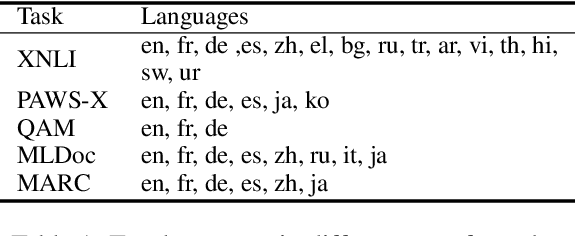
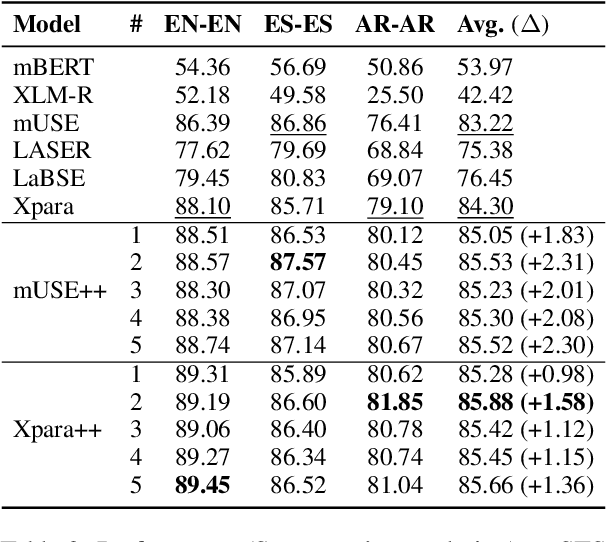
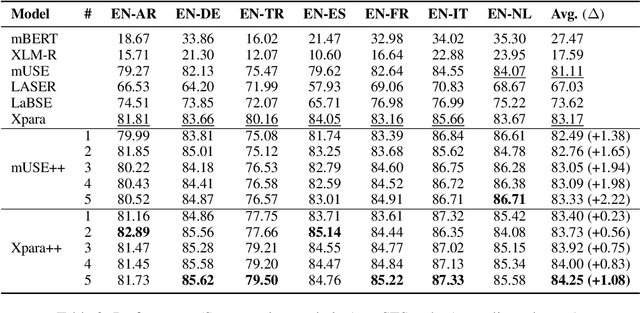
Abstract:We introduce a new method to improve existing multilingual sentence embeddings with Abstract Meaning Representation (AMR). Compared with the original textual input, AMR is a structured semantic representation that presents the core concepts and relations in a sentence explicitly and unambiguously. It also helps reduce surface variations across different expressions and languages. Unlike most prior work that only evaluates the ability to measure semantic similarity, we present a thorough evaluation of existing multilingual sentence embeddings and our improved versions, which include a collection of five transfer tasks in different downstream applications. Experiment results show that retrofitting multilingual sentence embeddings with AMR leads to better state-of-the-art performance on both semantic textual similarity and transfer tasks. Our codebase and evaluation scripts can be found at \url{https://github.com/jcyk/MSE-AMR}.
PACIFIC: Towards Proactive Conversational Question Answering over Tabular and Textual Data in Finance
Oct 17, 2022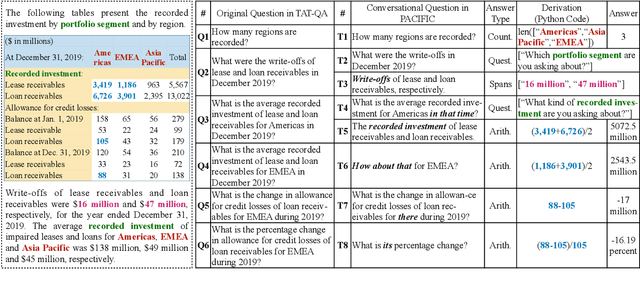
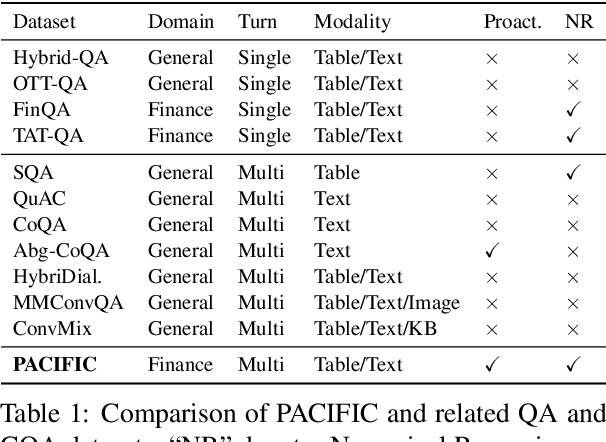
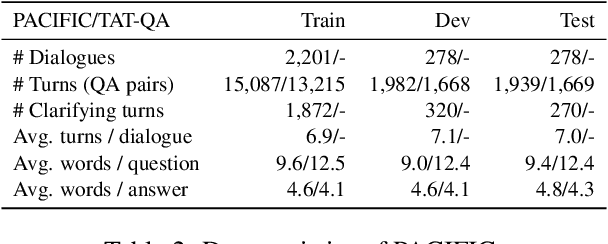

Abstract:To facilitate conversational question answering (CQA) over hybrid contexts in finance, we present a new dataset, named PACIFIC. Compared with existing CQA datasets, PACIFIC exhibits three key features: (i) proactivity, (ii) numerical reasoning, and (iii) hybrid context of tables and text. A new task is defined accordingly to study Proactive Conversational Question Answering (PCQA), which combines clarification question generation and CQA. In addition, we propose a novel method, namely UniPCQA, to adapt a hybrid format of input and output content in PCQA into the Seq2Seq problem, including the reformulation of the numerical reasoning process as code generation. UniPCQA performs multi-task learning over all sub-tasks in PCQA and incorporates a simple ensemble strategy to alleviate the error propagation issue in the multi-task learning by cross-validating top-$k$ sampled Seq2Seq outputs. We benchmark the PACIFIC dataset with extensive baselines and provide comprehensive evaluations on each sub-task of PCQA.
PeerDA: Data Augmentation via Modeling Peer Relation for Span Identification Tasks
Oct 17, 2022


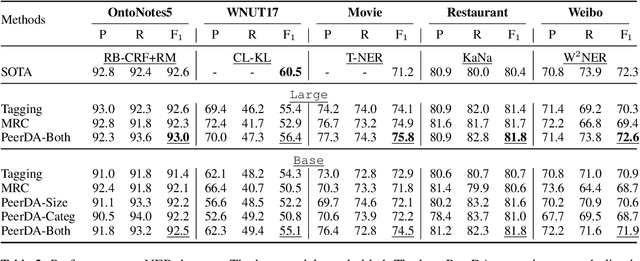
Abstract:Span Identification (SpanID) is a family of NLP tasks that aims to detect and classify text spans. Different from previous works that merely leverage Subordinate (\textsc{Sub}) relation about \textit{if a span is an instance of a certain category} to train SpanID models, we explore Peer (\textsc{Pr}) relation, which indicates that \textit{the two spans are two different instances from the same category sharing similar features}, and propose a novel \textbf{Peer} \textbf{D}ata \textbf{A}ugmentation (PeerDA) approach to treat span-span pairs with the \textsc{Pr} relation as a kind of augmented training data. PeerDA has two unique advantages: (1) There are a large number of span-span pairs with the \textsc{Pr} relation for augmenting the training data. (2) The augmented data can prevent over-fitting to the superficial span-category mapping by pushing SpanID models to leverage more on spans' semantics. Experimental results on ten datasets over four diverse SpanID tasks across seven domains demonstrate the effectiveness of PeerDA. Notably, seven of them achieve state-of-the-art results.
ConReader: Exploring Implicit Relations in Contracts for Contract Clause Extraction
Oct 17, 2022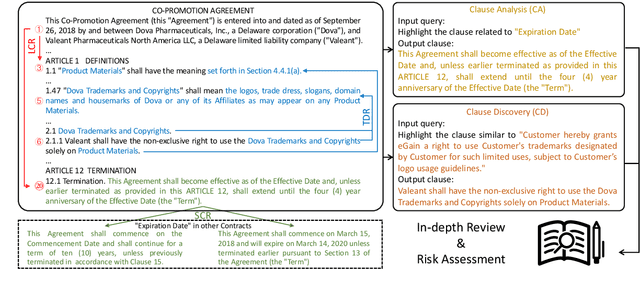
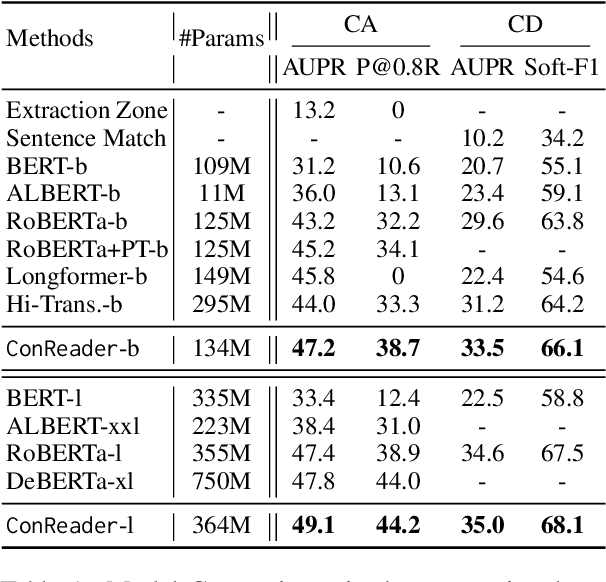
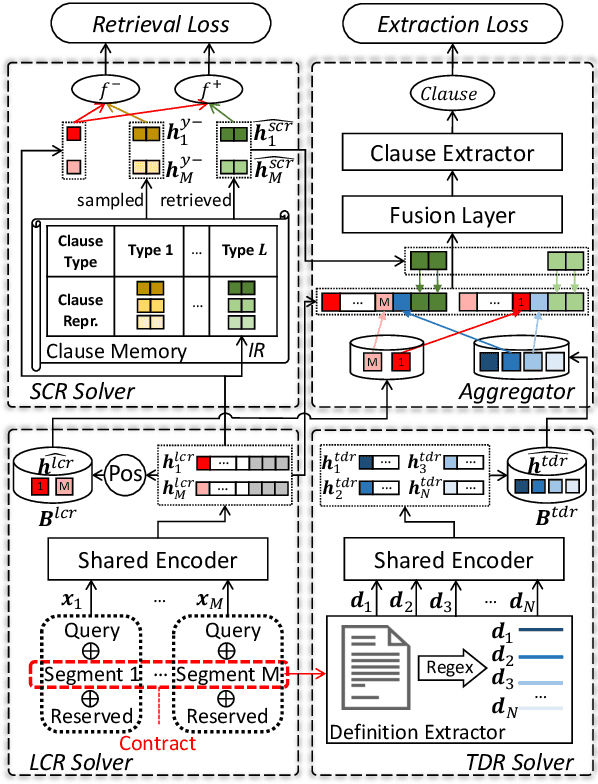
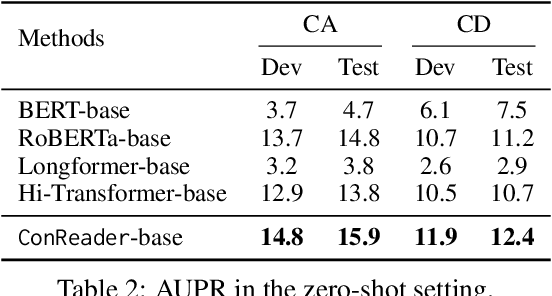
Abstract:We study automatic Contract Clause Extraction (CCE) by modeling implicit relations in legal contracts. Existing CCE methods mostly treat contracts as plain text, creating a substantial barrier to understanding contracts of high complexity. In this work, we first comprehensively analyze the complexity issues of contracts and distill out three implicit relations commonly found in contracts, namely, 1) Long-range Context Relation that captures the correlations of distant clauses; 2) Term-Definition Relation that captures the relation between important terms with their corresponding definitions; and 3) Similar Clause Relation that captures the similarities between clauses of the same type. Then we propose a novel framework ConReader to exploit the above three relations for better contract understanding and improving CCE. Experimental results show that ConReader makes the prediction more interpretable and achieves new state-of-the-art on two CCE tasks in both conventional and zero-shot settings.
Multilingual Transitivity and Bidirectional Multilingual Agreement for Multilingual Document-level Machine Translation
Oct 05, 2022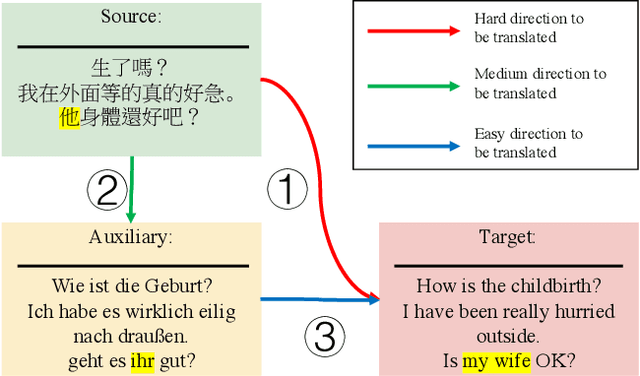
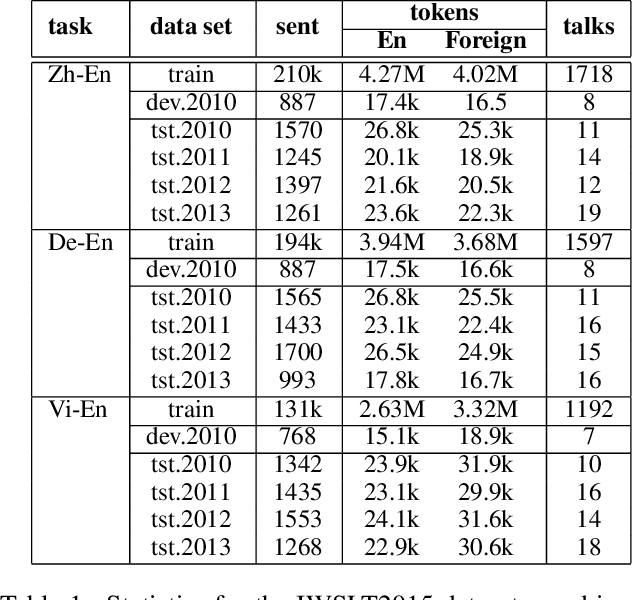
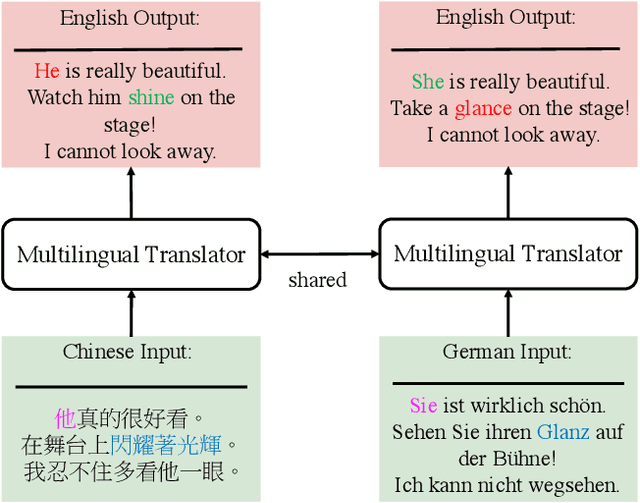

Abstract:Multilingual machine translation has been proven an effective strategy to support translation between multiple languages with a single model. However, most studies focus on multilingual sentence translation without considering generating long documents across different languages, which requires an understanding of multilingual context dependency and is typically harder. In this paper, we first spot that naively incorporating auxiliary multilingual data either auxiliary-target or source-auxiliary brings no improvement to the source-target language pair in our interest. Motivated by this observation, we propose a novel framework called Multilingual Transitivity (MTrans) to find an implicit optimal route via source-auxiliary-target within the multilingual model. To encourage MTrans, we propose a novel method called Triplet Parallel Data (TPD), which uses parallel triplets that contain (source-auxiliary, auxiliary-target, and source-target) for training. The auxiliary language then serves as a pivot and automatically facilitates the implicit information transition flow which is easier to translate. We further propose a novel framework called Bidirectional Multilingual Agreement (Bi-MAgree) that encourages the bidirectional agreement between different languages. To encourage Bi-MAgree, we propose a novel method called Multilingual Kullback-Leibler Divergence (MKL) that forces the output distribution of the inputs with the same meaning but in different languages to be consistent with each other. The experimental results indicate that our methods bring consistent improvements over strong baselines on three document translation tasks: IWSLT2015 Zh-En, De-En, and Vi-En. Our analysis validates the usefulness and existence of MTrans and Bi-MAgree, and our frameworks and methods are effective on synthetic auxiliary data.
Informative Text Generation from Knowledge Triples
Sep 26, 2022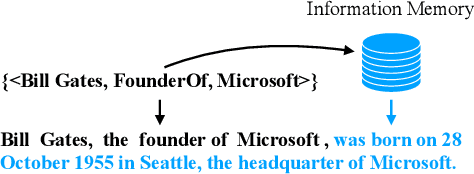
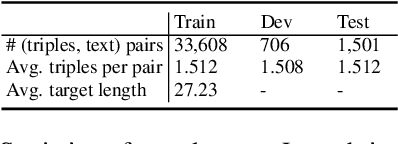
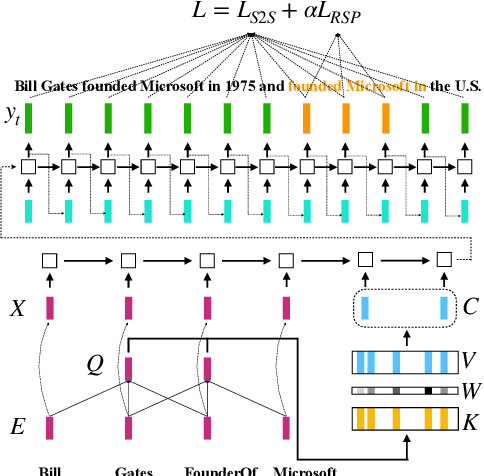

Abstract:As the development of the encoder-decoder architecture, researchers are able to study the text generation tasks with broader types of data. Among them, KB-to-text aims at converting a set of knowledge triples into human readable sentences. In the original setting, the task assumes that the input triples and the text are exactly aligned in the perspective of the embodied knowledge/information. In this paper, we extend this setting and explore how to facilitate the trained model to generate more informative text, namely, containing more information about the triple entities but not conveyed by the input triples. To solve this problem, we propose a novel memory augmented generator that employs a memory network to memorize the useful knowledge learned during the training and utilizes such information together with the input triples to generate text in the operational or testing phase. We derive a dataset from WebNLG for our new setting and conduct extensive experiments to investigate the effectiveness of our model as well as uncover the intrinsic characteristics of the setting.
PCC: Paraphrasing with Bottom-k Sampling and Cyclic Learning for Curriculum Data Augmentation
Aug 17, 2022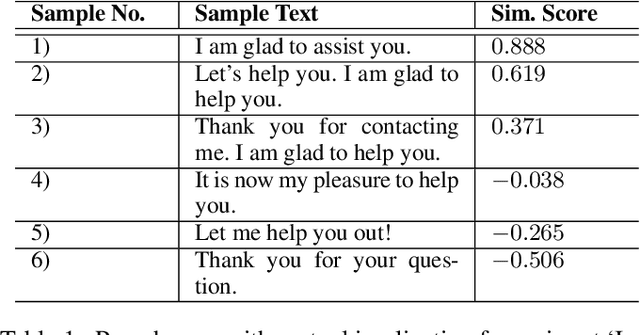
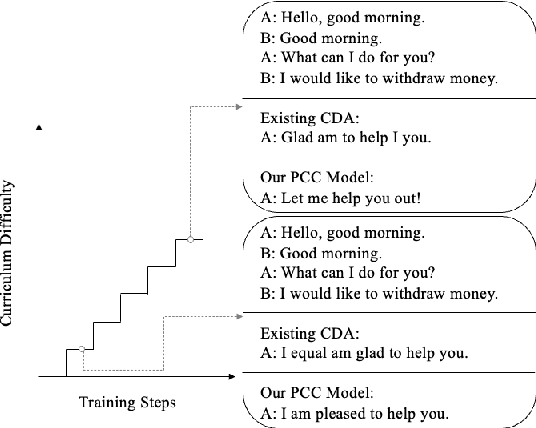

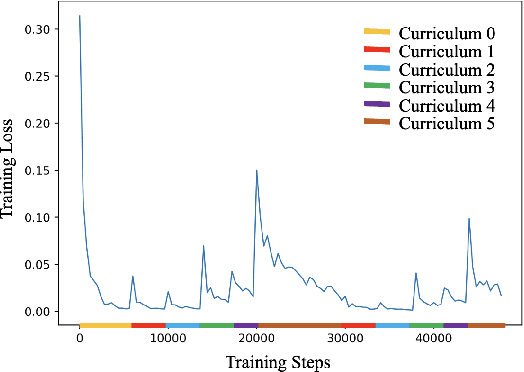
Abstract:Curriculum Data Augmentation (CDA) improves neural models by presenting synthetic data with increasing difficulties from easy to hard. However, traditional CDA simply treats the ratio of word perturbation as the difficulty measure and goes through the curriculums only once. This paper presents \textbf{PCC}: \textbf{P}araphrasing with Bottom-k Sampling and \textbf{C}yclic Learning for \textbf{C}urriculum Data Augmentation, a novel CDA framework via paraphrasing, which exploits the textual paraphrase similarity as the curriculum difficulty measure. We propose a curriculum-aware paraphrase generation module composed of three units: a paraphrase candidate generator with bottom-k sampling, a filtering mechanism and a difficulty measure. We also propose a cyclic learning strategy that passes through the curriculums multiple times. The bottom-k sampling is proposed to generate super-hard instances for the later curriculums. Experimental results on few-shot text classification as well as dialogue generation indicate that PCC surpasses competitive baselines. Human evaluation and extensive case studies indicate that bottom-k sampling effectively generates super-hard instances, and PCC significantly improves the baseline dialogue agent.
UniGDD: A Unified Generative Framework for Goal-Oriented Document-Grounded Dialogue
Apr 16, 2022


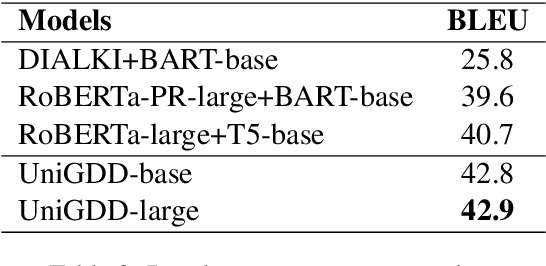
Abstract:The goal-oriented document-grounded dialogue aims at responding to the user query based on the dialogue context and supporting document. Existing studies tackle this problem by decomposing it into two sub-tasks: knowledge identification and response generation. However, such pipeline methods would unavoidably suffer from the error propagation issue. This paper proposes to unify these two sub-tasks via sequentially generating the grounding knowledge and the response. We further develop a prompt-connected multi-task learning strategy to model the characteristics and connections of different tasks and introduce linear temperature scheduling to reduce the negative effect of irrelevant document information. Experimental results demonstrate the effectiveness of our framework.
 Add to Chrome
Add to Chrome Add to Firefox
Add to Firefox Add to Edge
Add to Edge